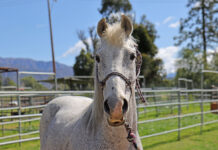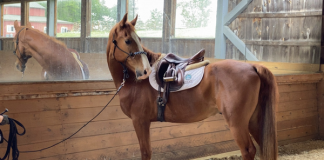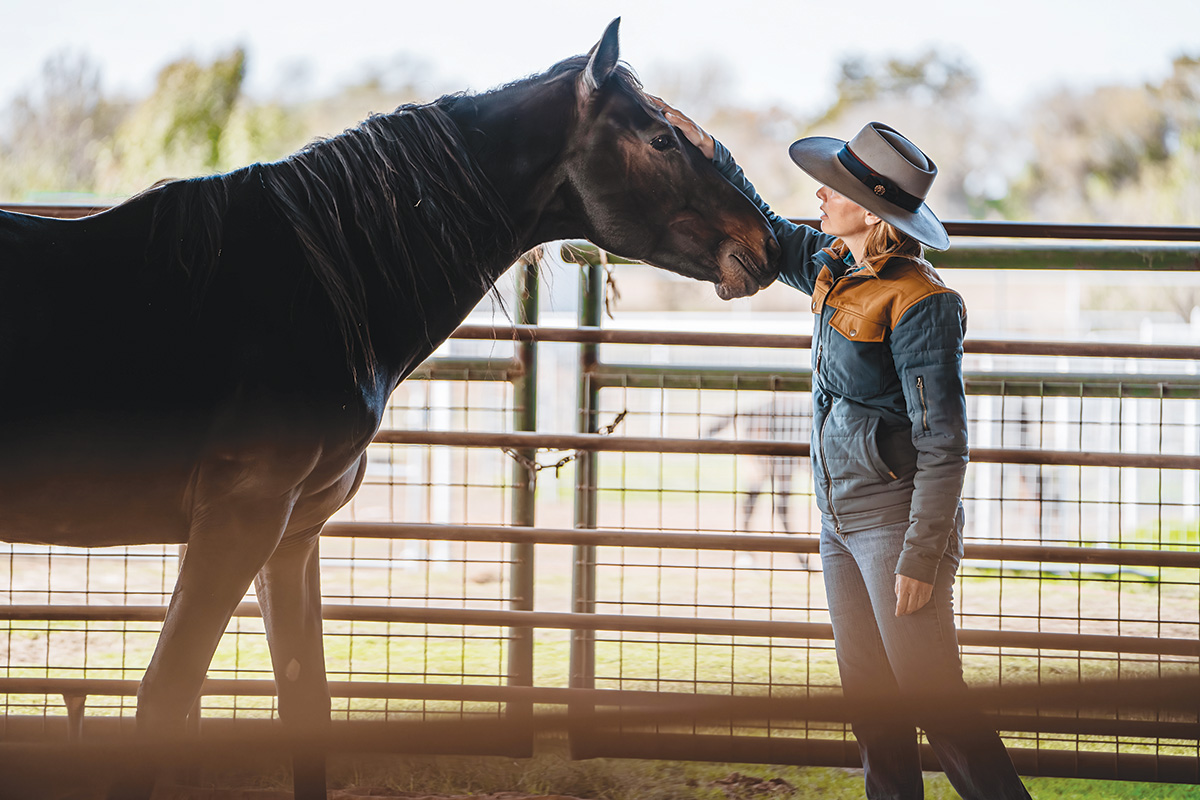
Imagine an entire month dedicated to celebrating adoptable horses: For the past four years, the month of May has been just that. With help from the ASPCA, rescues and shelters across the country will take all of May to highlight the important work they do all year long. To celebrate, two ASPCA Right Horse Partners with somewhat different yet still key roles share their Adopt a Horse Month success stories.
Wild at Heart Horse Rescue
“We are more like a transition facility,” says Executive Director Leslie Stewart. “We take 100 percent owner-surrendered horses.”
In situations where an owner has passed away or developed a terminal illness and their family doesn’t know what to do with their horses, Wild at Heart takes them in. This act helps keep horses out of auctions.
“We’re helping horses, but we’re helping people, too,” says Stewart. Surrendered horses undergo a health screening with the organization’s veterinarian and, if healthy, are placed into training with professional trainers that work with the rescue.
This year, with help from the ASPCA, the organization has its largest plans yet for Adopt a Horse Month.
“It’s going to be on social media everywhere,” says Stewart. “We’re going to be doing a couple of open houses where people can come meet the horses.”
Last year, the group also held a pancake breakfast and barbecue. Due to the success of these two events, they plan to repeat them this year. The public is invited to attend both events.
Success Stories
Having a special month dedicated entirely to shining a light on adoptable horses has its benefits. On average, Wild at Heart sees four to five adoptions per month.
But in May, thanks to special promotional efforts, that number has doubled. The additional exposure from Adopt a Horse Month has brought about some unanticipated adoption success stories.
For example, last year an aged horse, River, came in with moon blindness and was already blind in one eye. Stewart explains that due to his long-term prognosis, River was going to be difficult to adopt.
That’s when fate stepped in. Thanks to an Adopt a Horse Month social media post featuring him, River was discovered and then adopted by a son as a surprise for his father, who was River’s original owner!
But, Stewart emphasizes, even if you’re not ready for adoption, there are still ways that you can help.
“I always suggest the people come out and volunteer,” she says. She encourages volunteers to take photos during their visit and post them on social media. “Word of mouth is the best form of advertising.”
Stewart also advocates for other rescues not yet affiliated with the ASPCA to join in.
“It has been a godsend for us,” she says. The organization, she says, has helped with grants, promoting the rescue’s horses, and much more, allowing them to serve more horses and people.
Humane Society of North Texas
The Humane Society of North Texas, located in Joshua, Texas, takes a slightly different approach.
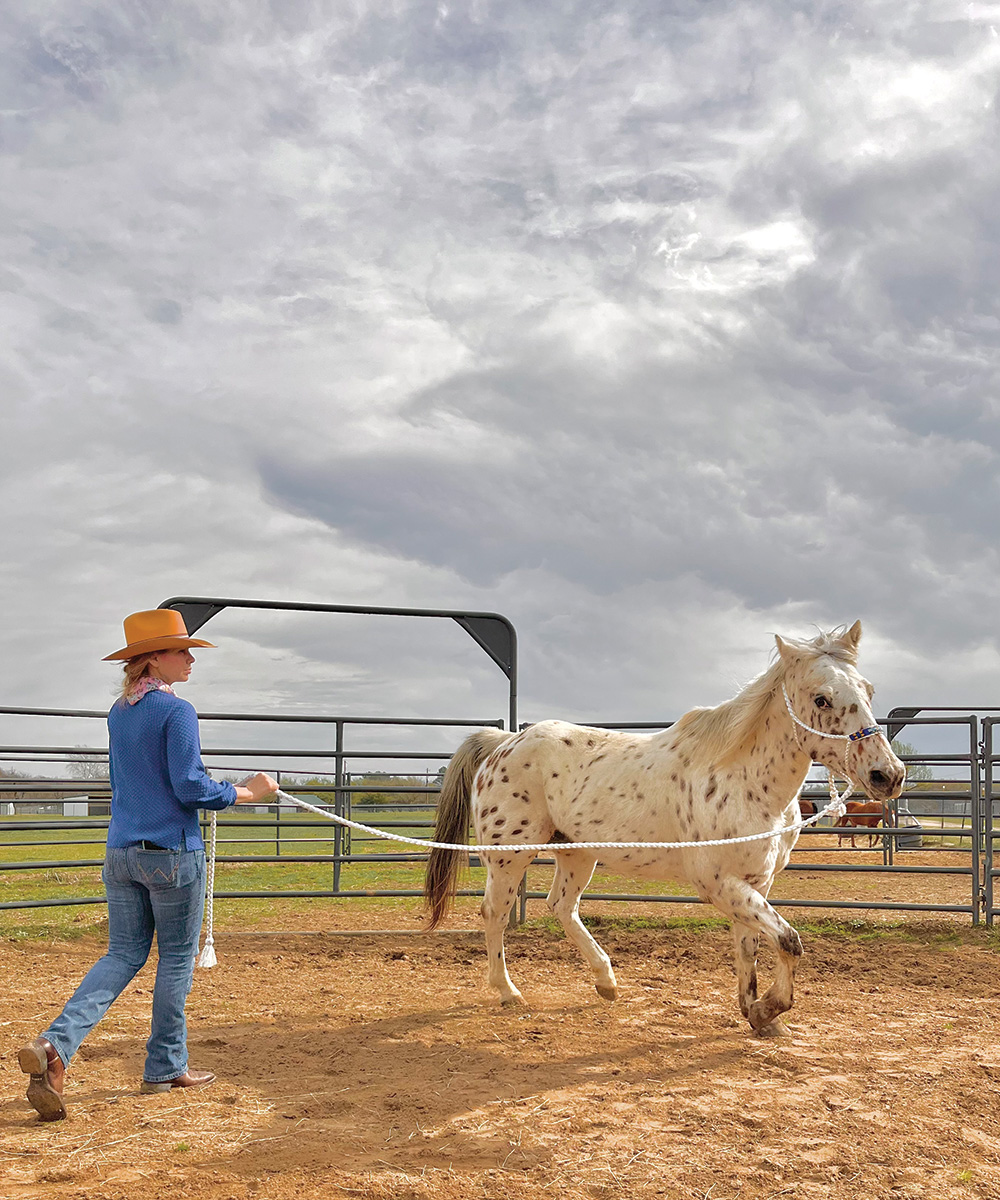
“The ranch itself is part of the Humane Society of North Texas, but we are at a separate location [on 35 acres approximately 25 miles away] from the actual shelter in downtown Fort Worth,” says Director of Equine and Livestock Steve Stevens.
“We rescue horses and some livestock, and focus primarily on cruelty and owner surrenders,” he continues. “We have a director of cruelty and a cruelty team that works out of the shelter in Fort Worth.” This team, Stevens says, goes on calls to surrounding areas.
When the organization receives a call about an animal that is struggling, they go out and check on it. Typically, a conversation is started with the owner to determine if the concerns are legitimate, and, if so, the owner is first educated about reasons such as a lack of deworming or dental care, that may be the cause. From there, the owner receives a 30-day warning, after which they need to provide proof from a veterinarian that they are working to improve their horse’s health.
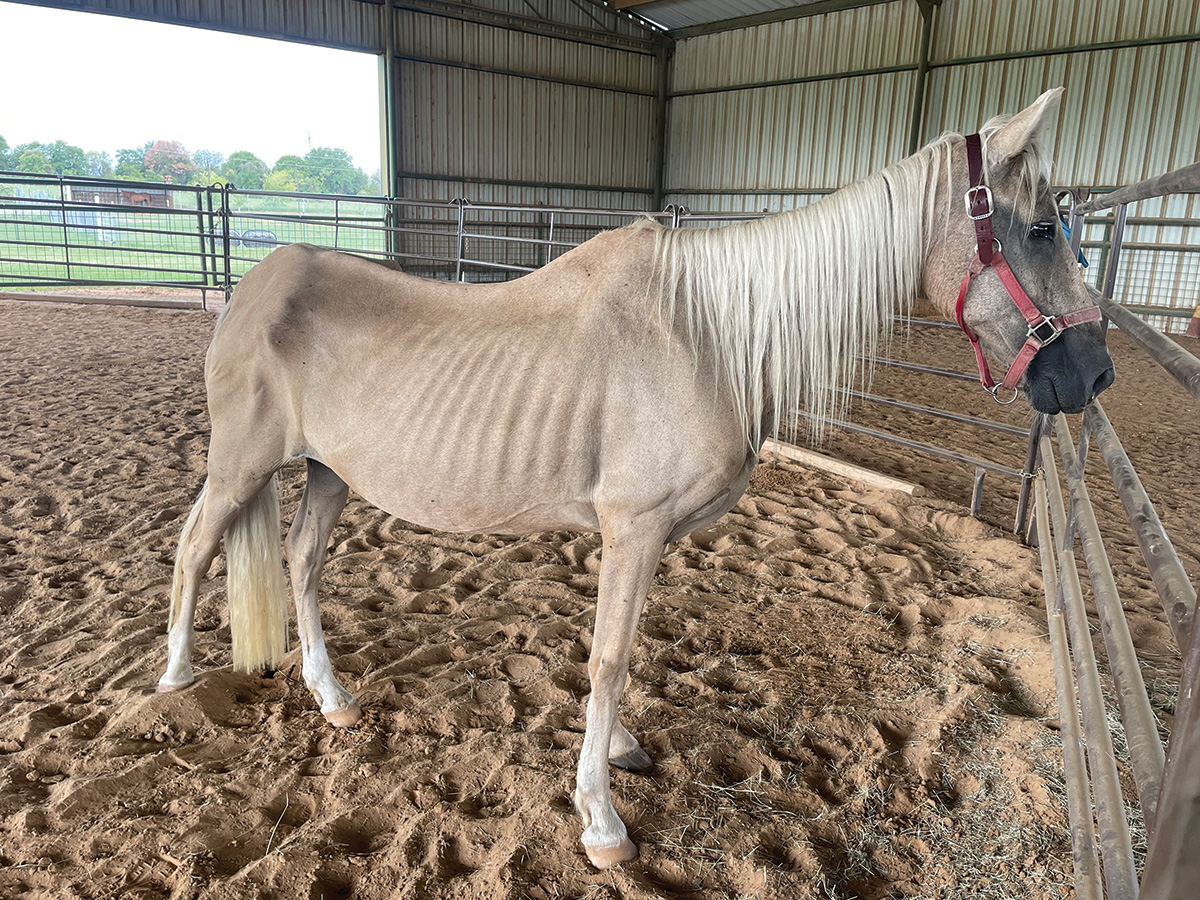
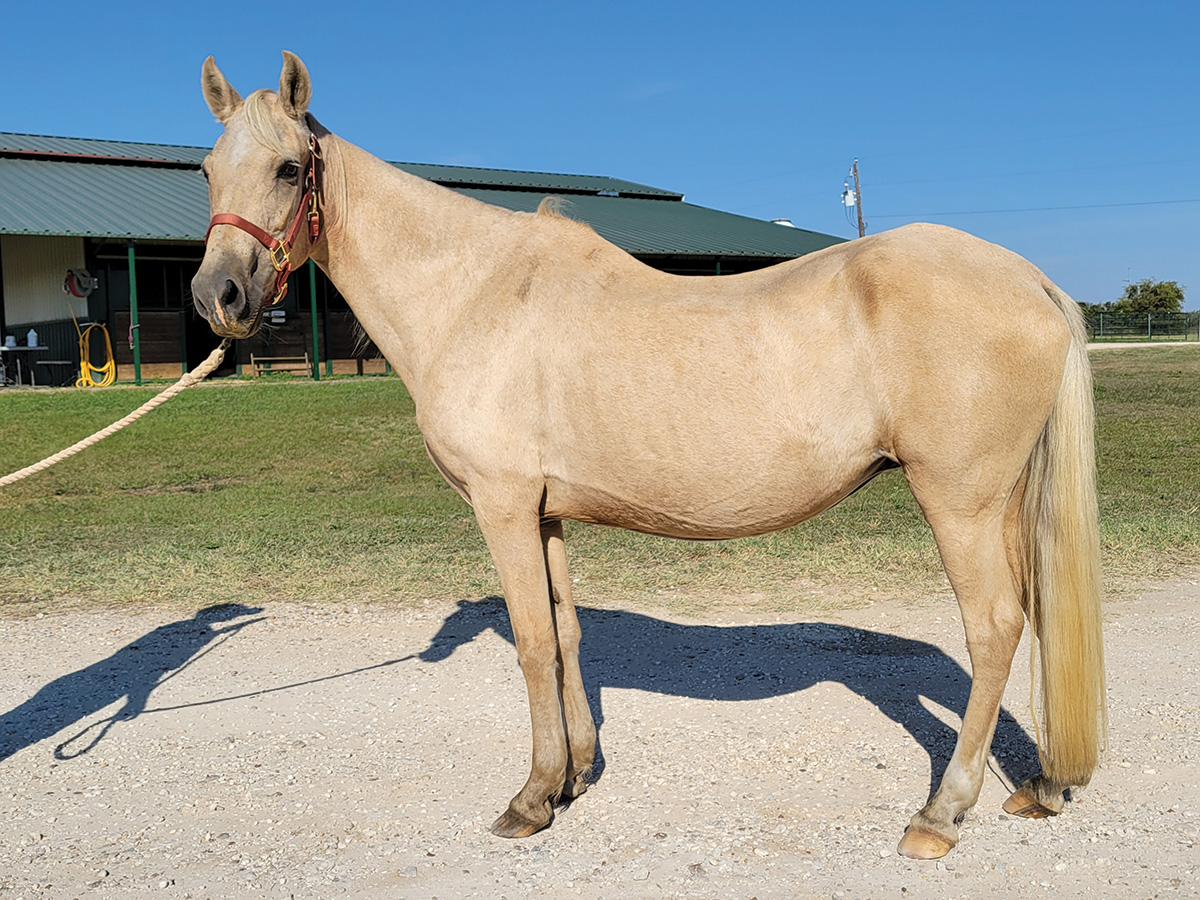
In extreme cases, the organization’s cruelty director works with the local judicial system on seizures or negotiated seizures. Stevens explains that negotiated seizures are preferable.
“It means that we are asking them to turn over their horses so we don’t have to seize them,” he says. Rather than going to court, which can take several weeks, negotiated seizure comes with the advantage of providing the organization with immediate ownership, something that can benefit certain aspects of the horse’s care.
Results in Texas
Last year, the organization took in 100 horses. Forty percent of those were cruelty cases, while an additional 40 percent were owner-surrendered horses—those coming from homes where the owner was struggling financially or experiencing some other type of life-altering event. The remaining 20 percent were horses that were transferred in from other organizations.
New horses are quarantined, undergo an exam, and receive any medical care they need. While some horses may require time to benefit from refeeding, others may be ready soon after settling in to begin the process of retraining needed to help remove obstacles to adoption.
“It’s a rehabilitation-based training, centered on connection work and building trust with the human,” says head trainer Amanda Stevens.
Many of the horses at the facility will be promoted as companion horses. Even so, trainers work to provide sustained support to those adopting these horses. It’s a successful formula with some individuals adopting multiple companion horses to be enjoyed by their families.
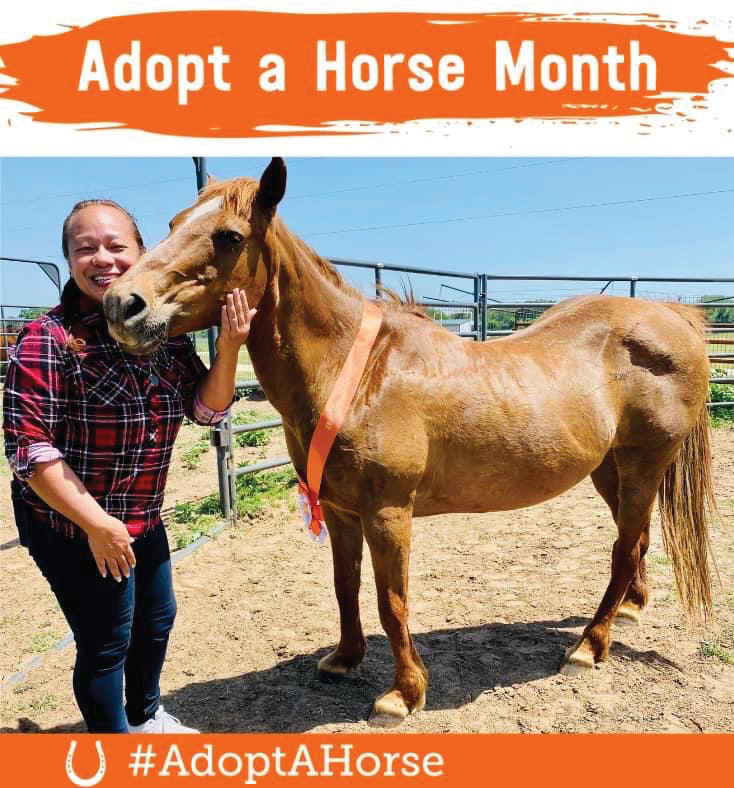
Using grants available from the ASPCA, particularly around social media promotion, the organization has seen an increase in adoptions. Overall, 90 horses were adopted last year, with 10 horses finding homes during Adopt a Horse Month.
“We focus on telling their individual stories and celebrate these horses at whatever level they are at,” Stevens says, adding that it’s important for potential adopters to meet the horses and identify which ones they make a connection with.
“We want to support anyone that comes out,” he says. Stevens encourages the public to watch for adoptable horses on their social media pages.
Adopt a Horse Month Success Across the Country
“Last year, 400 horses were adopted during Adopt a Horse Month thanks to the tireless efforts of equine rescues and shelters across the country,” says Cailin Caldwell, ASPCA Right Horse Program Director. “We are thrilled to kick off the fourth annual Adopt a Horse Month this May to continue raising public enthusiasm and commitments to horse adoption.
“We encourage the public to not only adopt, but use this opportunity to raise awareness of equine adoption with their friends, family, barn mates, and social media networks,” she continues. “Visit myrighthorse.org to find an organization near you this May—and beyond—to support adoption, fostering or volunteering.”
If adopting a horse, volunteering at a rescue, or promoting an adoptable horse on social media sounds right for you, consider taking part during Adopt a Horse Month—and all year long.
Keep an eye out for featured adoptable horses this Adopt a Horse month during a virtual adoption event hosted by ASPCA and Horse Illustrated!
This article about Adopt a Horse Month success stories appeared in the May 2024 issue of Horse Illustrated magazine. Click here to subscribe!


